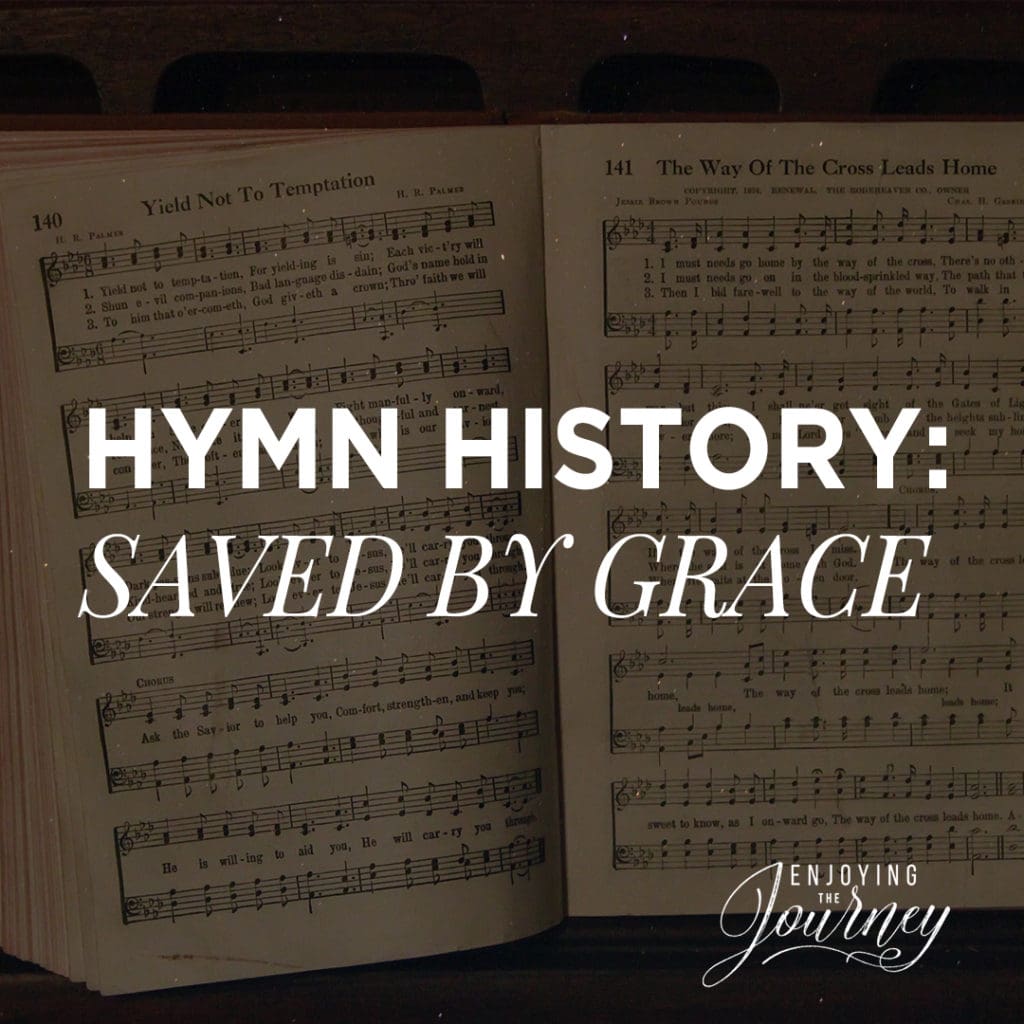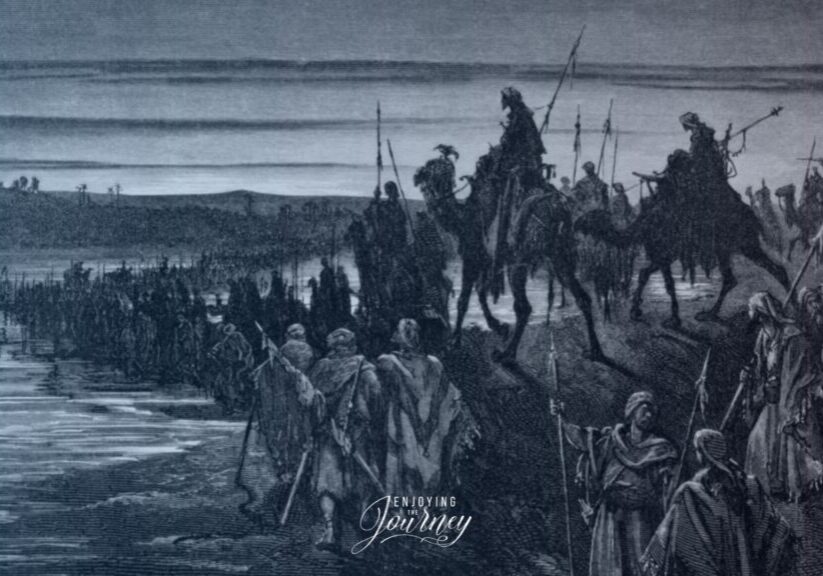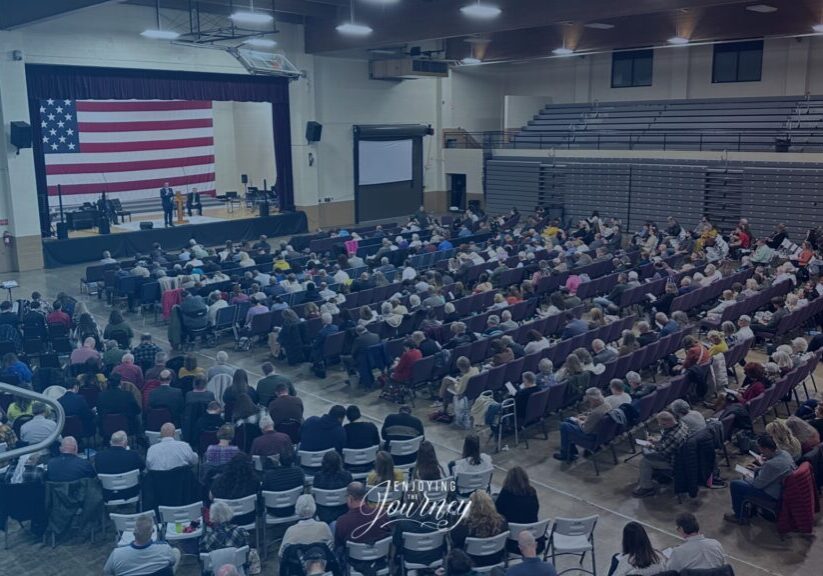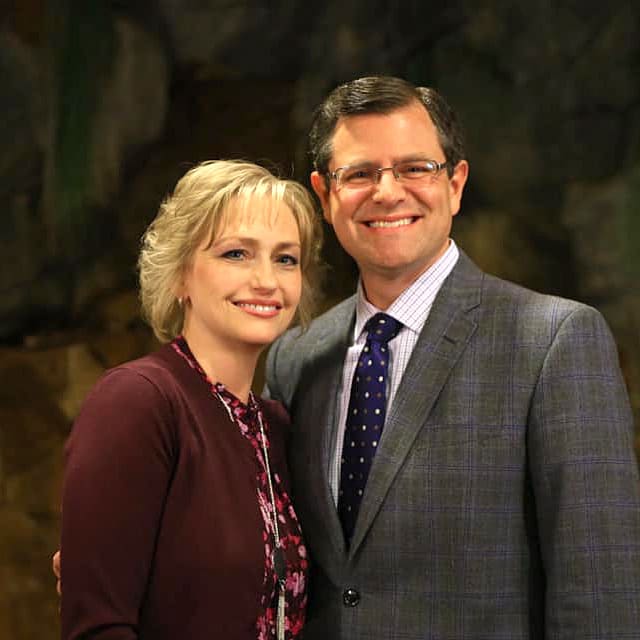
“For by grace are ye saved through faith; and that not of yourselves: it is the gift of God: Not of works, lest any man should boast.“ – Ephesians 2:8-9
We are thrilled to share a series of brief accounts of how some of the great hymns of our faith were written. Each synopsis has been compiled through the research of Jerry Vargo and is shared by permission. It is our hope that these stories will be a help and encouragement to your Christian walk. This week we read the full and little-known story behind the stirring hymn, “Saved By Grace.”
______________________________________________________________________________
In the 1800’s, there were three people who influenced Gospel singing more than any others: D. L. Moody, Ira Sankey, and Fanny Crosby.
The powerful words of Ephesians 2:8-9 were the inspiration for Fanny Crosby’s hymn Saved by Grace. L. H. Biglow, a music publisher, asked Fanny Crosby to write a hymn on the subject of grace. She immediately retired to an adjoining room, and in the course of an hour returned with the words, “Someday the silver cord will break, and I no more as now shall sing.” Mr. Biglow secured the words from her, and put them in the safe among other hymns which she had written.
The song was evidently forgotten. It eventually came to public notice by accident. It was during a conference that Fanny attended at Northfield, Massachusetts. During the meeting, the great evangelist, Dwight Moody, asked if Fanny would give a personal testimony to the audience. Not wanting to draw attention to herself, she almost declined, but finally got up to speak. Mrs. Crosby shared, “There is one hymn I have written which has never been published. I call it my soul’s poem. Sometimes when I am troubled, I repeat it to myself, for it brings comfort to my heart.”
She then closed her remarks by reciting the words which had never been heard before in public, “Saved By Grace”. Fanny did not want these words to be set to music. They were special to her and she wanted to keep them to herself to be used when she was asked to speak at meetings.
A reporter of a London paper, who was present when she quoted the words, carried them back to England. He then published the words in his paper without Fanny’s knowledge. Four or five weeks later, the words were handed to George C. Stebbins who set Fanny’s words to music.
During the following years the song became one of Mr. Moody’s favorites, and since then has been sung by hundreds of thousands of people throughout the world. Some hymnals show the author as Ida Scott Taylor, one of Fanny’s fake names she used. It is obvious that blind Fanny Crosby was “looking” forward to seeing her Savior face to face. The hymn looks forward to the day when, in the words of the chorus, we “shall see Him face to face.” Or as the last two lines of the final verse declare, on that day “when my Savior I will greet, my faith will then be changed to sight.” Fanny Crosby once said: “When I get to heaven, the first face that shall ever gladden my sight will be that of my Savior.”
Fanny Crosby’s fine song faces the reality of physical death, but she looks beyond it, with joyful expectation, to being in the presence of her Savior.
1. Some day the silver cord will break,
And I no more as now shall sing;
But oh, the joy when I shall wake
Within the palace of the King!
(Refrain) And I shall see Him face to face,
And tell the story—-Saved by grace;
And I shall see Him face to face,
And tell the story—-Saved by grace.
2. Some day my earthly house will fall,
I cannot tell how soon ’twill be;
But this I know-—my All in All
Has now a place in heav’n for me. (Refrain)
3. Some day, when fades the golden sun
Beneath the rosy-tinted west,
My blessed Lord will say, “Well done!”
And I shall enter into rest. (Refrain)
4. Some day: till then I’ll watch and wait,
My lamp all trimmed and burning bright,
That when my Saviour opes the gate,
My soul to Him may take its flight. (Refrain)







How much we should be thankfull for such a heritage of hymns that bring glory to our dear Lord and Savior.
To have a song in our hearts in our journey until we reach home.
Haven’t heard this song in a very long while! But, as soon as I saw the title, I remembered singing this as a little girl (I’m now 80)! Just seeing the title brought it all back to me and I remembered nearly all the words of all four verses! Oh, how I miss these old hymns! Hearing the stories behind these great words makes it come so much more alive! Thank you for sharing these!
I am a missionary in Brazil and when I go back to the USA I miss the churches singing more hymns like this great one. Praise the Lord we are Saved by Grace.
God bless you and your work in Brazil!
Never heard of the song before but am thrilled for this new hope from the story of Fanny Croby